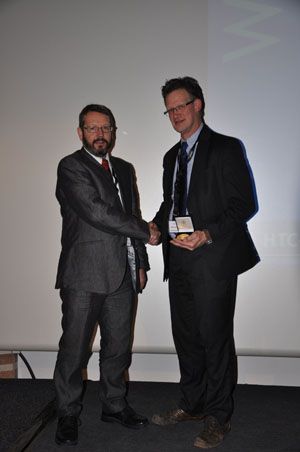Knox Medal Awarded to Peter Schoenmakers
The Analytical Division Separation Science Group of the Royal Society of Chemistry has awarded the Knox medal to Peter Schoenmakers of the Van?t Hoff Institute in Amsterdam, the Netherlands.

The Analytical Division Separation Science Group of the Royal Society of Chemistry has awarded the Knox medal to Peter Schoenmakers of the Van’t Hoff Institute in Amsterdam, the Netherlands.
Schoenmakers is the Chair of Analytical Chemistry and Forensic Science at the University of Amsterdam since 2009, and the interests of his research group cover polymer analysis, gas chromatography, and more recently comprehensive two-dimensional chromatography. He is an enthusiastic ambassador and champion for the chromatographic sciences and serves on a number of editorial boards including the Chromatography Monograph series of the Royal Society of Chemistry and LCGC Europe.
The medal is named after Professor John H. Knox, a pioneer in gas chromatography who contributed to the development of modern high performance chromatographic methods. It was commissioned by the Separation Science Group in 2008 and is awarded for “innovative, influential work in the area of separation science, and recognizes excellence in development, application, training, and/or dissemination of information and results”. Previous award recipients include Pat Sandra (2009), Chang Kee Lim (2011), and Ian Wilson (2012).
For more information visit: www.sep-sci.org.uk/knox.html
Measuring Vitamin K1 Concentrations in Dogs with Chronic Enteropathy Using LC–MS/MS
May 14th 2025A joint study between the University of Tennessee (Knoxville, Tennessee) and the University of Pennsylvania School of Veterinary Medicine (Philadelphia, Pennsylvania) compared directly measured vitamin K1 (vitK1) concentrations in healthy dogs and dogs with chronic enteropathy (CE) using liquid chromatography tandem mass spectrometry (LC–MS/MS); they also investigated whether supplementation of vitK1 in dogs with CE would significantly increase vitK1 concentrations.
HPLC 2025 Preview: Fundamentally Speaking (Part 2)
May 14th 2025Michael Lämmerhofer from the Institute of Pharmaceutical Sciences, University of Tübingen, Germany, spoke to JFK Huber Lecture Award winner of 2024 Torgny Fornstedt, professor in analytical chemistry and leader of the Fundamental Separation Science Group, Karlstad University, Sweden, about his pioneering work in high performance liquid chromatography (HPLC) with a focus on fundamentals, ion-pair chromatography, and oligonucleotide applications.

.png&w=3840&q=75)

.png&w=3840&q=75)



.png&w=3840&q=75)



.png&w=3840&q=75)




